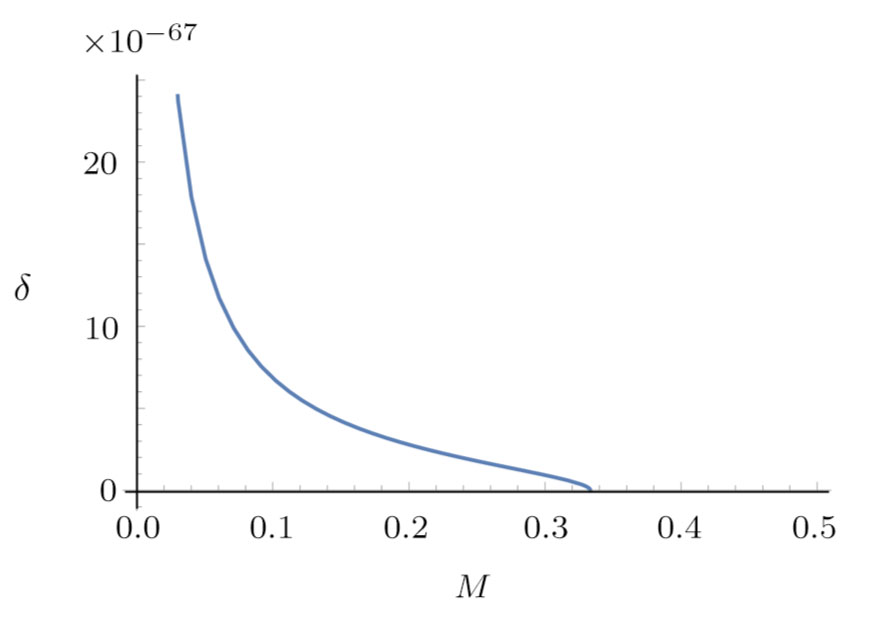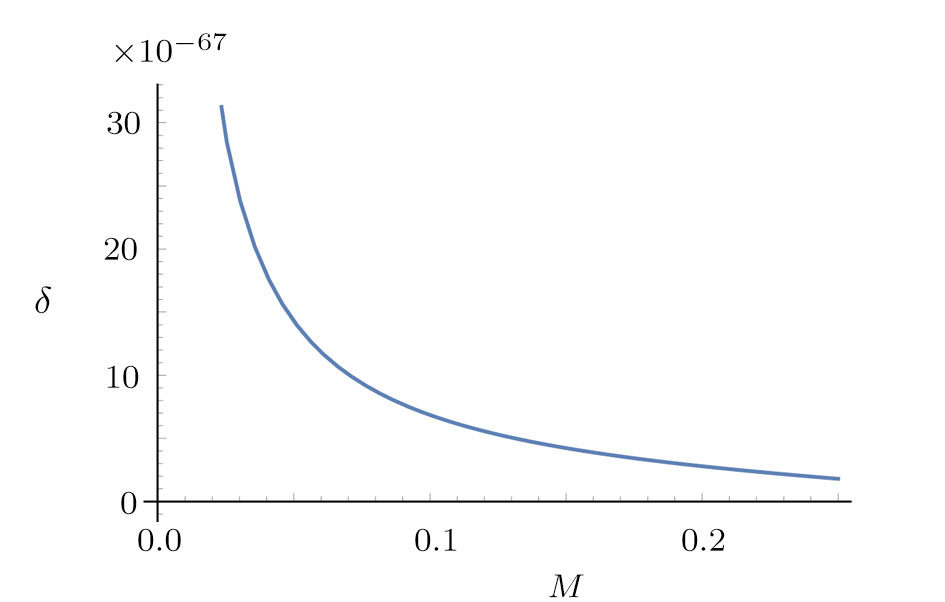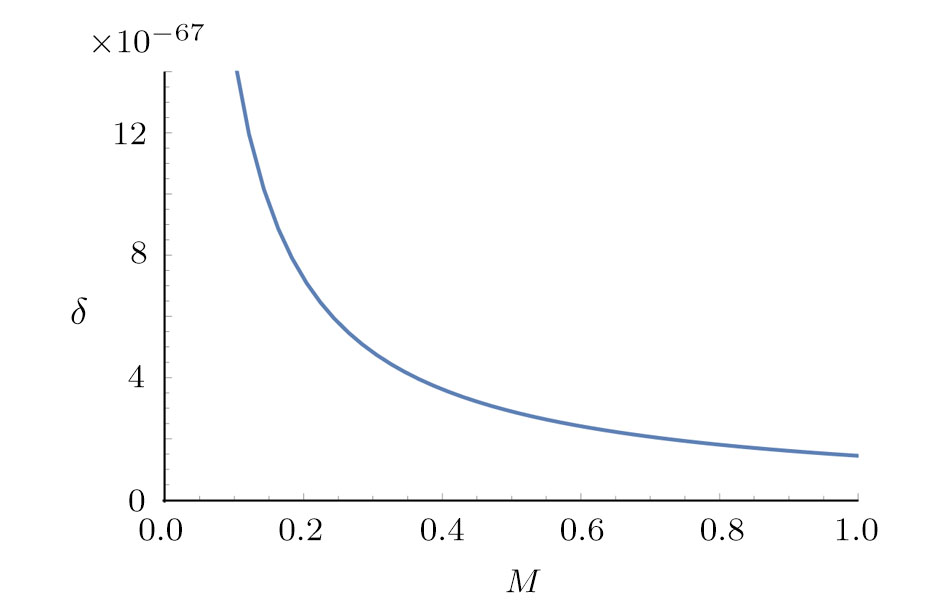† Corresponding author. E-mail:
Supported by the National Natural Science Foundation of China under Grant Nos. 11675139, 11605137, 11435006, 11405130, the Double First-Class University Construction Project of Northwest University, the China Postdoctoral Science Foundation under Grant No. 2017M623219, and Shaanxi Postdoctoral Science Foundation
By adopting a result from generalized uncertainty principles (GUP), we modify the inner bound of the membrane model to a physical fixed value and get the cut-offs naturally rather than by hand, which are both in brick-wall model and membrane model, and the semi-classical quantization condition could always be valid as well. We also calculate the entropies of Schwarzschild-de Sitter black hole and find the GUP we choose qualitatively shows that the requirement of mass in this method is the same as the natural requirement of the Schwarzschild-de Sitter black hole, which means the method might be self-consistent.
Bekenstein[1] and Hawking[2] proposed that a black hole should have entropy, and showed that the entropy of a black hole is related to its area of the event horizon. Explicitly, the relation is S = A/4, where S is the entropy, and A is the area of the black hole’s event horizon. This is called the Bekenstein-Hawking entropy. After that, the entropy of black holes have been studied for decades. People have developed many methods to calculate the entropy of black holes. The results mainly support the idea that the entropy of a black hole is directly proportional to it’s area of the event horizon. One of these called the brick-wall model[3] is widely used, which is brought out by G’t Hooft on 1985. This model believes that the entropy of a black hole is the entropy of the quantum gas in thermal equilibrium exists between the external fields and the black hole horizon in a spatial region, which is called the “brick-wall”. With this method, people have obtained many useful results.[4–10] This model gives us a clearer and easier method for calculating the entropy of a black hole and gives acceptable explanations. Normally, the formulation of the entropy contains many parts. One of the parts contributes the main entropy component while others are just small corrections.
Liu and Zhao[11] modified this model. They believe that the main part of the entropy may come from a very thin wall named the membrane[12–13] (or called the film[14]), which is called the membrane model. This model is more simple, some papers had studied the entropy with this model[12–16] and got some beautiful results. Mathematically, this model assumed that the thickness of the wall could reduce to zero. Thus, the entropy of a black hole could be taken as the entropy of a two-dimensional membrane. This view is very charming, and could give a nice result. But, physically, if the thickness of the wall reduces to zero, the semi-classical quantization, which is used in the membrane model might be invalid.
However, both the brick-wall model and the membrane model contain the disadvantages that there need a cut-off taken by hand in order to satisfy the result of the Bekenstein-Hawking entropy. Moreover, the physical picture is not quite clear.
To solve this puzzle, we modify the membrane model. Since the thickness of the wall should not reduce to zero, we could change the lower limit to a finite value. This value should have its own physical meaning. If we change this limitation, the calculation of the entropy will be a little different. The Planck unit ħ = c = G = 1 has been taken throughout this paper.
For a Schwarzschild black hole, the line element reads








The cut-off is related with parameters ϵ and δ in membrane model, which is chosen by hand, and the physical meaning of the choice is also not very clear. Besides, when ϵ → 0, the semi-classical condition might be invalid near the Planck scale. We would like to discuss and reconsider the parameter ϵ.
It is generally believed that the Planck scale exists in our universe[1,17–19] and several theories based on this got some good results. Moreover, the loop quantum gravity theory found the evidence that the space is Planck scale discrete[20] in nature. It announced that the area and volume have discrete spectrum.[21–22]
Besides, many efforts have been devoted to the GUP recently. The simplest formulation of generalize the uncertainty relation reads[23]





In Refs. [24--27], the authors calculated the entropy and gave the result in Eq. (
If we set ϵ = 2λκ, Eq. (








By using this method, we also get the Bekenstein-Hawking entropy of a black hole. From Eq. (
In order to see whether the parameter δ is really small enough to form a membrane or not, we could discuss the relationship qualitatively by roughly setting λ = lp = 10−35. Then Eq. (

It seems there is nothing special for this modification, the semi-classical quantization may not be quite important. However, when use this modified method to calculate the entropies of Schwarzschild-de Sitter black hole, we find something interesting.
For a four-dimensional Schwarzschild-de Sitter black hole, the line element is[29]






The surface gravity of rH is[30]







 | Fig. 2 Plot of δH with 0 < M < 0.5 of a Schwarzschild-de Sitter black hole, M is not chosen in a good range. The parameter δH = 0 at M = 1/3. |
From Fig.
To check this, we solve δH=0 from Eq. (
Then, by choosing the proper range of M, we could get Fig.
 | Fig. 3 Plot of δH with 0 < M < 0.25 of a Schwarzschild-de Sitter black hole, M is chosen in a proper range. The parameter δH is always positive. |
For a Schwarzschild-de Sitter black hole, we could also get the entropy by natural cut-off, which is determined by its mass. Moreover, one could see that the GUP we used might be self-consistent by calculating the entropy of a Schwarzschild-de Sitter black hole, which might reflect the natural of the Planck scale.
In summary, by using the results and ideas from the generalized uncertainty principle, we have modified the inner bound of the membrane model and got the Bekenstein-Hawking entropies with cut-offs, which were chose by nature rather than by hand. We have also uncovered a result that the thickness of the membrane is only connected with the mass of the black hole itself. The inner distance ϵ is a fixed value, which is determined by the black hole itself with κ as well. Besides, the semi-classical quantization condition could be always valid since the parameter δ is always positive. Since the inner bound is set to a fixed value, we find the requirement of δ also reflects the natural requirement of a Schwarzschild-de Sitter black hole, which means that the GUP we choose is self-consistent and this modification might reflect the physical meaning of the Plank scale. We would like to check this result in other kind of black holes in the future works.
| [1] | |
| [2] | |
| [3] | |
| [4] | |
| [5] | |
| [6] | |
| [7] | |
| [8] | |
| [9] | |
| [10] | |
| [11] | |
| [12] | |
| [13] | |
| [14] | |
| [15] | |
| [16] | |
| [17] | |
| [18] | |
| [19] | |
| [20] | |
| [21] | |
| [22] | |
| [23] | |
| [24] | |
| [25] | |
| [26] | |
| [27] | |
| [28] | |
| [29] | |
| [30] |


